AULA 12/2022 – Simple Past/ Past Continuous - 10/06/2022
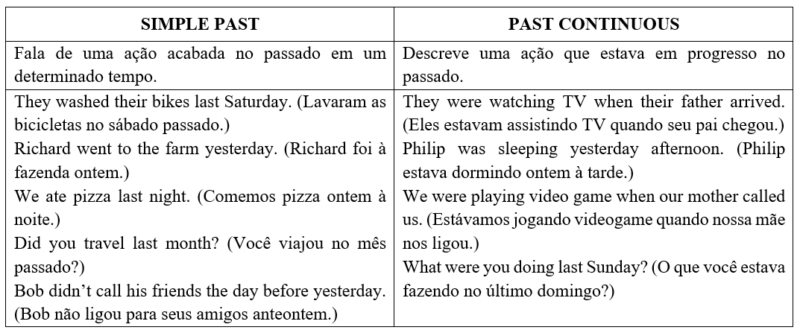
'Colloquial English is a term given to spoken English used in common speech. It is not the same as Standard English and will differ from region to region'.
('Inglês coloquial é um termo dado ao inglês falado usado na fala comum. Não é o mesmo que o inglês padrão e será diferente de região para região ').
Alguns exemplos:
Coca-Cola = coke
You all = y'all
Going to/want to = gonna/wanna
How do you do = howdo
Having a joke = he's pulling my leg
Isn't, hasn't = ain't
I don't know = dunno
A carbonated soft drink = pop (upper midwestern US)/ tonic (England)/ ginger (Scotland)
Where are you from? = Ya from?
Every other week or twice a week = biweekly
Don't mess up = don't screw up.
What are you going to do? = whacha gonna do?
He watches too much TV = he is a couch potato.
Disponível em: https://www.usingenglish.com/forum/threads/127189-Colloquial-English Acesso em 04 de maio de 2021.
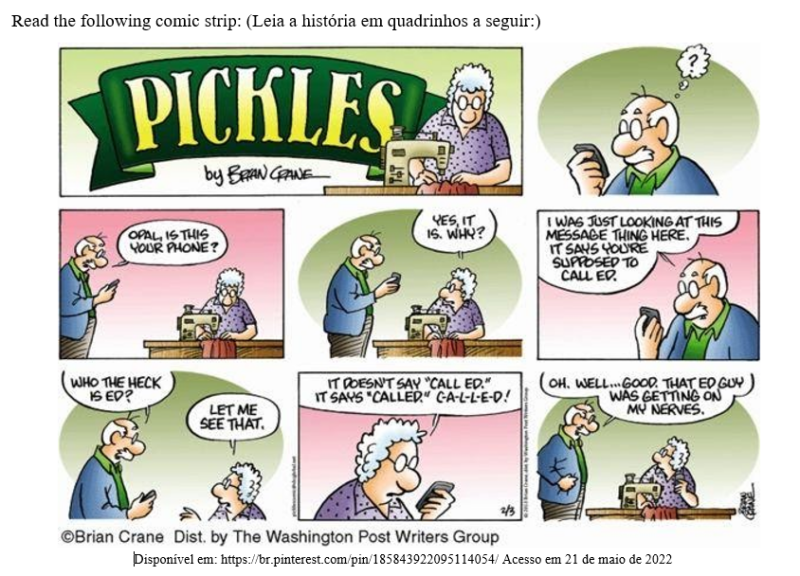
- Ao lermos a história em quadrinhos, observamos que Earl aponta uma situação que não gostou e que gerou um mal-entendido. Identifique a situação e como foi resolvida.
2. Retire da história em quadrinhos duas orações em que os verbos estejam no Past Continuous.
3. Complete the sentences with the Past Continuous tense then match them to the pictures. (Complete as frases com o Past Continuous e depois combine as figuras abaixo.)
a) He ______________________________ (play) the guitar when his mom came home.
b) My sister _________________________ (cry) when she came home from school.
c) They _______________________ (have) dinner last night when the police arrived.
d) The students _____________________ (watch) a movie when the principal arrived.

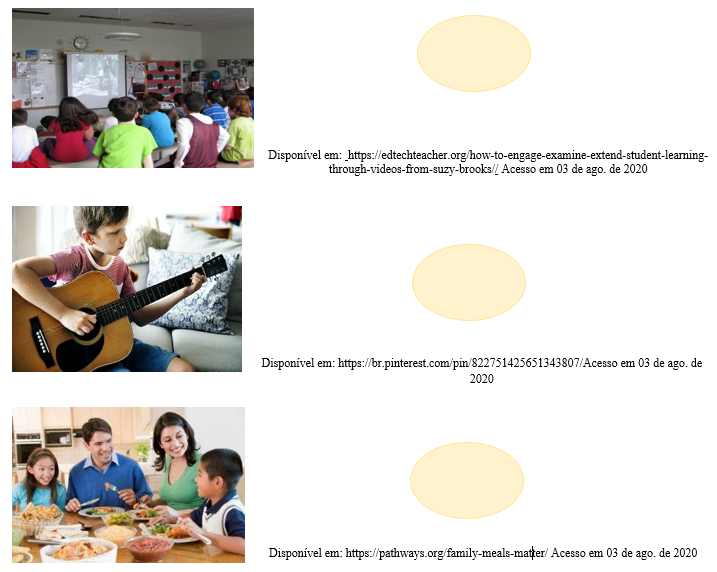
Leia o texto a seguir e responda as atividades:
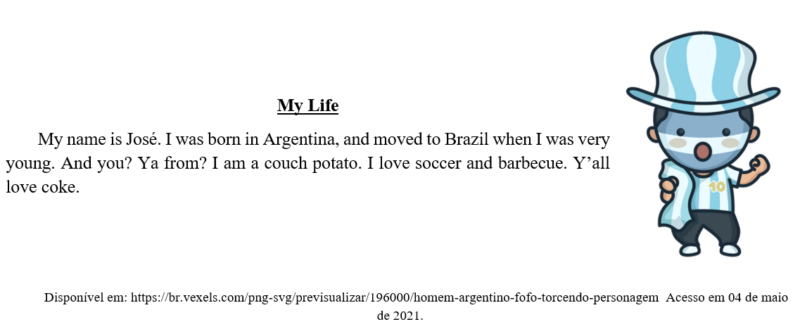
4. Identifique as expressões que estão escritas na linguagem coloquial e reescreva-as na linguagem padrão.
5. Answer these questions and then ask your friends. Take notes in the following chart. (Responda essas perguntas e depois pergunte a seus amigos. Faça as anotações na tabela a seguir.)
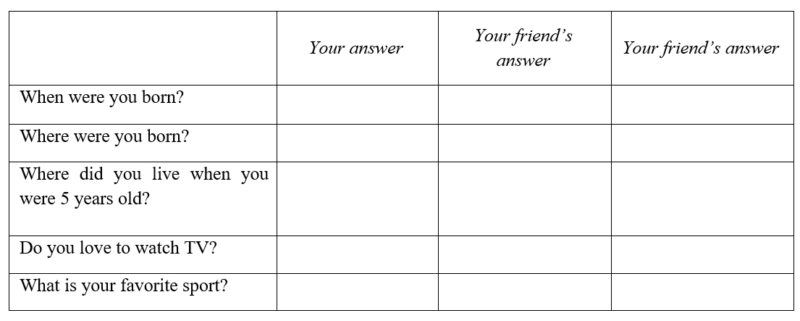
6. Based on your answers in exercise 5, write a short text about your life “when you were born; where you were born; what happened in your life in the last 3 years, etc”. (Com base nas suas respostas ao exercício 5, escreva um pequeno texto sobre a sua vida (quando nasceu; onde nasceu; o que aconteceu na sua vida nos últimos 3 anos, etc).
Read the comic strip and answer the exercises. (Leia a tirinha e responda os exercícios.)
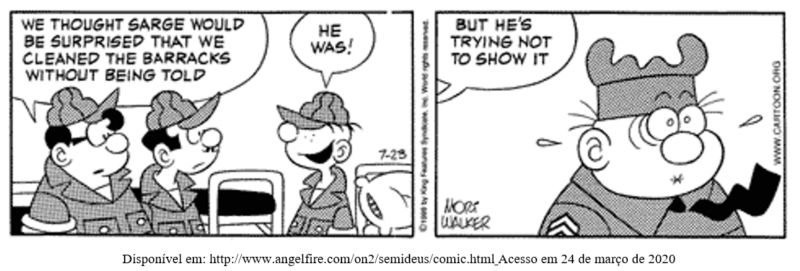
7. Ao lermos o primeiro quadrinho da história, observamos o uso do Simple Past em três orações. Identifique os verbos que estejam no Simple Past.
8. O que os soldados fizeram sem serem solicitados?
Leia o texto a seguir e responda os exercícios:
When gold was found in Brazil in the 1690’s, this country was finally recognized for its mineral and trading potential. Approximately a century later, though, it was clear that the gold deposits were limited and that the agricultural value of this country remained its main asset. Napoleon Bonaparte arrived in 1807 and the Prince Regent, Dom Joao, arrived shortly thereafter. When Dom Joao returned to Portugal in 1821, he left Brazil in the hands of his son, Dom Pedro. However, when the king tried to return to what was, essentially, his territory (Brazil), his son rebelled, declaring this country’s independence from Portugal.
Portugal was experiencing a massive economic crisis at this time, leading to a mass move of these people into South America, where they saw the potential to trade and to settle on safe, fertile land.
Disponível em: https://www.brazil.org.za/history.html Acesso em 03 de jul. de 2020
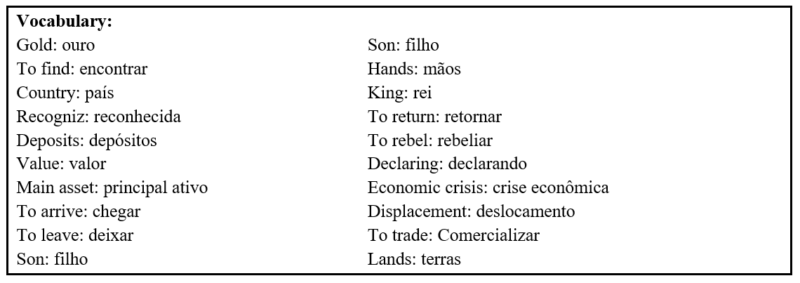
9. Match the columns with the information present in the text. (Combine as colunas com as informações presentes no texto.)
a) Napoleon Bonaparte ( ) declared Brazil’s independence from Portugal.
b) Dom João ( ) arrived in Brazil in 1807.
c) Dom Pedro ( ) was Dom Pedro’s father.
10. Mark an X TRUE or FALSE according to the text. Then, correct the false statements. (Marque um X no verdadeiro ou falso de acordo com o texto. Depois, corrija as sentenças falsas.)
